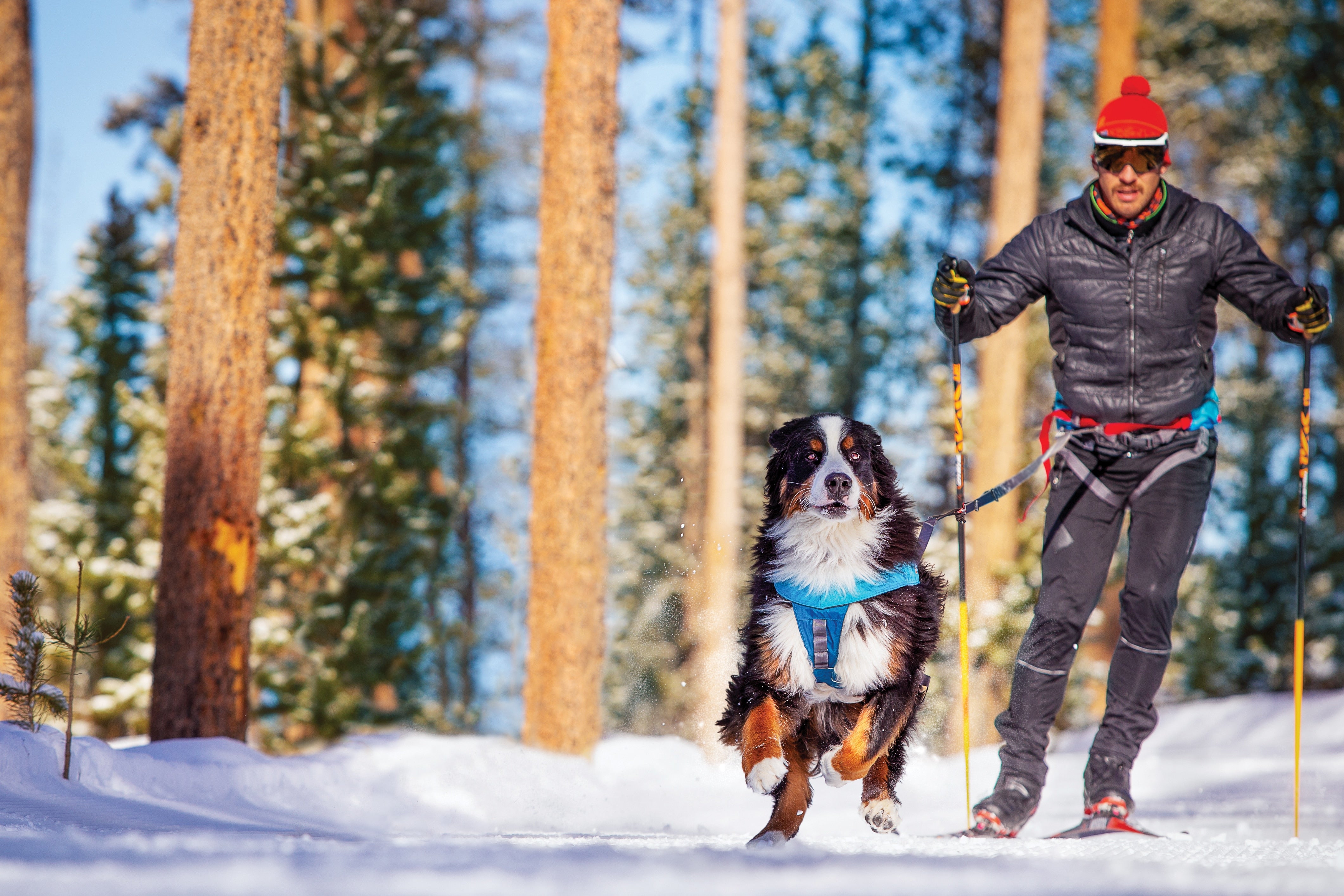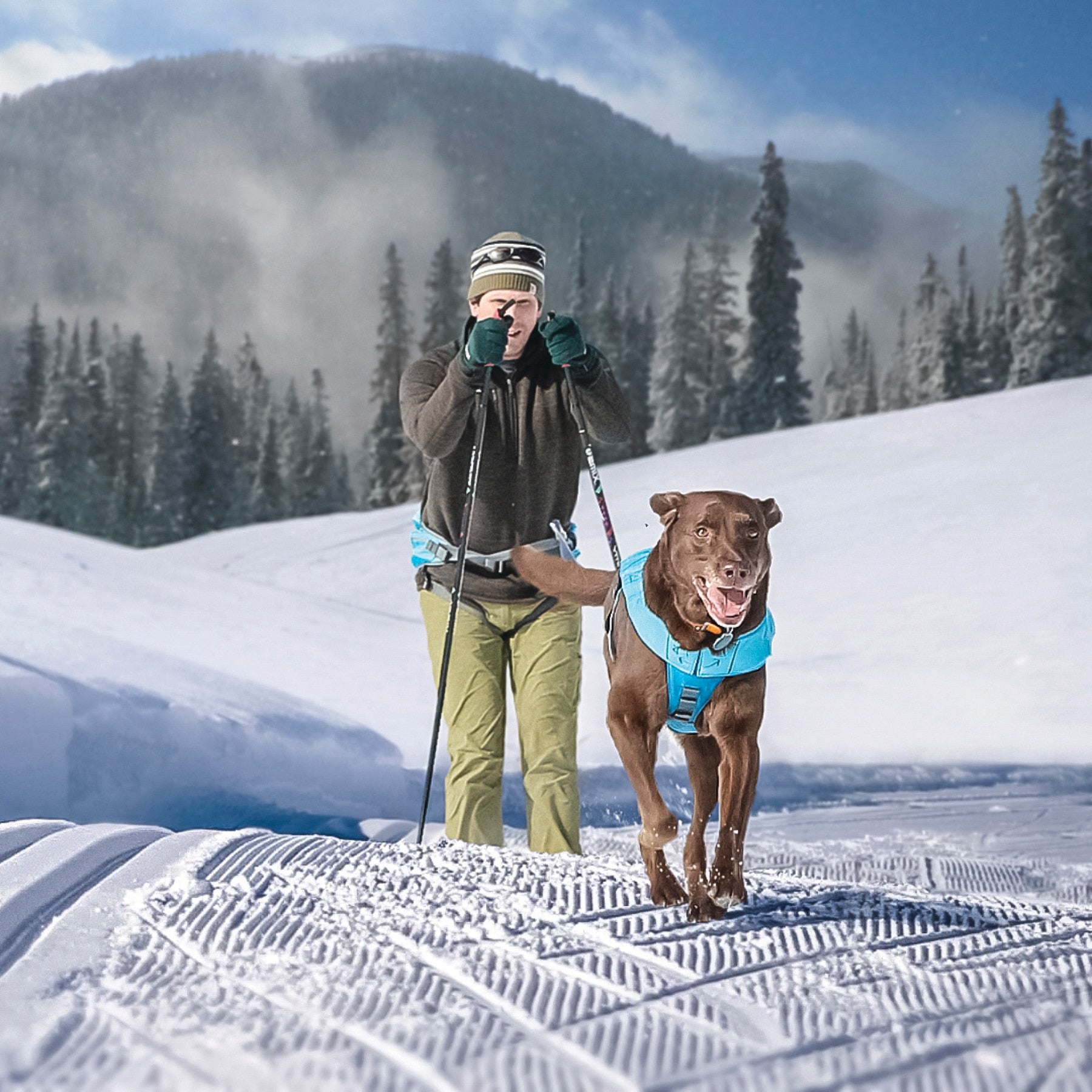
Winter’s Next-Best Adventure: Skijoring with Your Dog
Posted by Brooke Spater on 15th January 2019
Is there anything worse than cabin fever with an energetic dog? Many of us love staying active all year long with our dogs but we struggle with how to do so in cold weather. Winter’s next-best adventure may just come in the form of an activity you don’t even know about yet: skijoring. If you love to be outside in the winter and enjoy staying active with your dog, this might be your new favorite sport.

What the heck is skijoring? The word joring, originating from Norway, translates to “pulling” or “driving”. Dog joring means that your dog is pulling you
along by any means of transportation, such as a bike (bikejoring),
skateboard (skatejoring) or skis (skijoring). To put it simply, it is the
practice of having your dog tow or pull you. It also applies to the sport of
Canicross where your dog pulls you while you run. Additionally, any type of
joring falls into the category of “mushing” which is defined as a sport or
transportation method powered by dogs.
What do you need to get started?
- A love of being outdoors in winter weather! This includes both you and your dog.
- A dog who loves to run, weighs at least 30 pounds, and is in good physical
health. To dispel any myths, you don’t need to have a Siberian Husky or a Malamute to get in on the fun. Breeds like Labrador Retrievers, German Shorthaired pointers, Rhodesian Ridgebacks and many others would be great for the sport too.
- Your dog should know his basic obedience commands: Sit. Stay. Come. You can consider getting a book if you’re interested in training your dog with
more skijoring-specific commands. Check out Skijor With Your Dog: Second Edition by Mari Høe-Raitto and Carol Kaynor.
- A pair of cross-country skis. You shouldn’t ever use metal edge skis to
skijor.
-
Harness: A pulling harness is very important. Do not use a neck collar as you could
really hurt your dog’s neck!
- Tether: A tow line from the harness to your waist should include a bungee. For skijoring, you will typically need 8-12’ of line to account for the speed and ski tips.
- Human Waist Belt: A proper skijoring belt will ensure you are comfortable on the trail.
You can also consider purchasing a Long Hauler Joring & Canicross Kit that includes a harness, a line, and a waist
belt.

Do your dog and yourself a favor and get some practice alone on your
cross-country skis. Practice on a straightaway as well as going downhill and
using a snowplow to stop. Make sure you are comfortable falling as well. Megan
from @tansypup enjoys skijoring with her dogs and says, “Don’t be afraid to
fall! I always want to keep skijoring a fun and exciting activity for Tansy and
Crockett, so if suddenly one of them stops in my path or if one lags behind on
a downhill, I immediately fall down to prevent any of the pups from getting
bumped or pulled down.” Once you are ready to involve your dog, try out the
harness in your backyard while you are still on foot before attempting it with
the skis.
Be patient with your dog as you teach him
something new. This new adventure will be very fun but will take a little time
to get the hang of. Start slowly and increase sessions as you get going.
Megan’s advice is to remember that this is a team sport! “Your dog is doing a
lot of work pulling, but you are doing just as much work keeping the speed up
while also giving verbal cues and encouragement!”
Consider seeing if there is a skijoring club in your area to watch or take part in local events. This can be a great way to
meet people who are also interested in skijoring or a chance to watch those
with more experience in action.
As a friendly reminder, you should never
skijor on groomed cross-country skiing trails. Find a nice open area and let
your dog pull you to beautiful places and new adventures!
Have you tried skijoring your dog? What tips
do you have for beginners?
Brooke Spater oversees Social Media Marketing at Kurgo. Among other things, she manages the Kurgo blog and enjoys spending time with her husband, 3 kids, and their 90 lb. Goldendoodle named Baxter.
Recent posts
Does My Dog Need a Dog Collar or a Harness?
Trying to decide which is better for your dog—a collar or a harness? The short answer is: You may need both. It really depends on the size and temperament of your dog and what it takes to maintain safe control of him.
Why Does My Dog Bark in the Car?
A dog barking in the backseat of the car can be a real nuisance—and even a hazard—for human drivers. But for dogs, barking is a way of communicating. In order to put the kibosh on all that annoying barking, we first need to understand why our furry companion is barking to begin with.
Tips for Hiking with Your Dog
Hiking combines all of your pup’s first loves: sniffing, exploring, and spending time with his favorite person in the world—you. You won’t find a more enthusiastic hiking companion anywhere.


